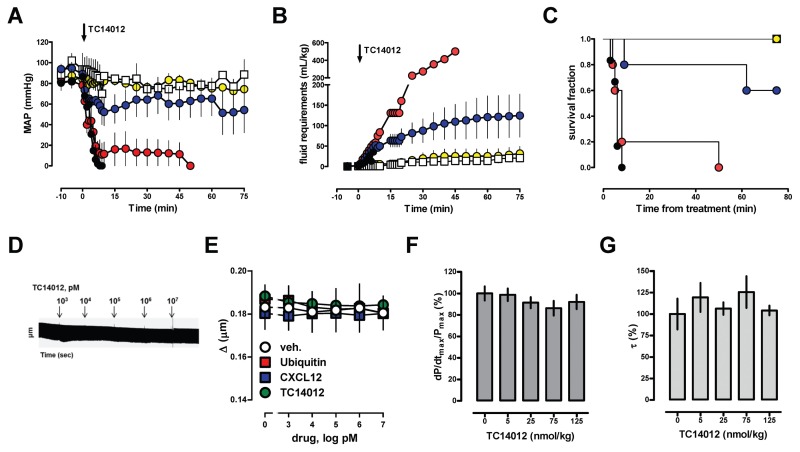Figure 1.
The CXCR4 antagonist and ACKR3 agonist TC14012 causes cardiovascular collapse in normal animals. Arrows indicate the time point of drug injection, n = 5/group. Open squares: vehicle. Yellow circles: 7 nmol/kg. Blue circles: 35 nmol/kg. Red circles: 175 nmol/kg. Black circles: 350 nmol/kg. (A) Mean arterial blood pressure (MAP, mmHg). (B) Cumulative fluid requirements to maintain hemodynamics (mL/kg). (C) Kaplan-Meier survival curve (p < 0.001 between groups). (D,E) Left ventricular cardiomyocytes were field-stimulated (20 V, 2 Hz, 6-ms pulse duration) and changes in sarcomere length during contractions measured using a video-sarcomere detection system. (D) Representative recording of the sarcomere length upon addition of increasing concentrations of TC14012 (1 nmol/L to 10 μmol/L). Concentrations of TC14012 were increased every 5 min. (E) Changes in sarcomere length (Δμm) upon addition of CXCR4/ACKR3 ligands. Measurements of 60 steady state contractions were averaged for each dose; n = 3–5. (F) Increasing doses of TC14012 (5 to 125 nmol/kg) were injected every 5 min and left ventricular contractility (dP/dtmax/Pmax) and (G) isovolumic relaxation constants (τ[Mirsky]) analyzed 2 min after injection. Data are expressed as % of control; n = 3 to 5/group.

